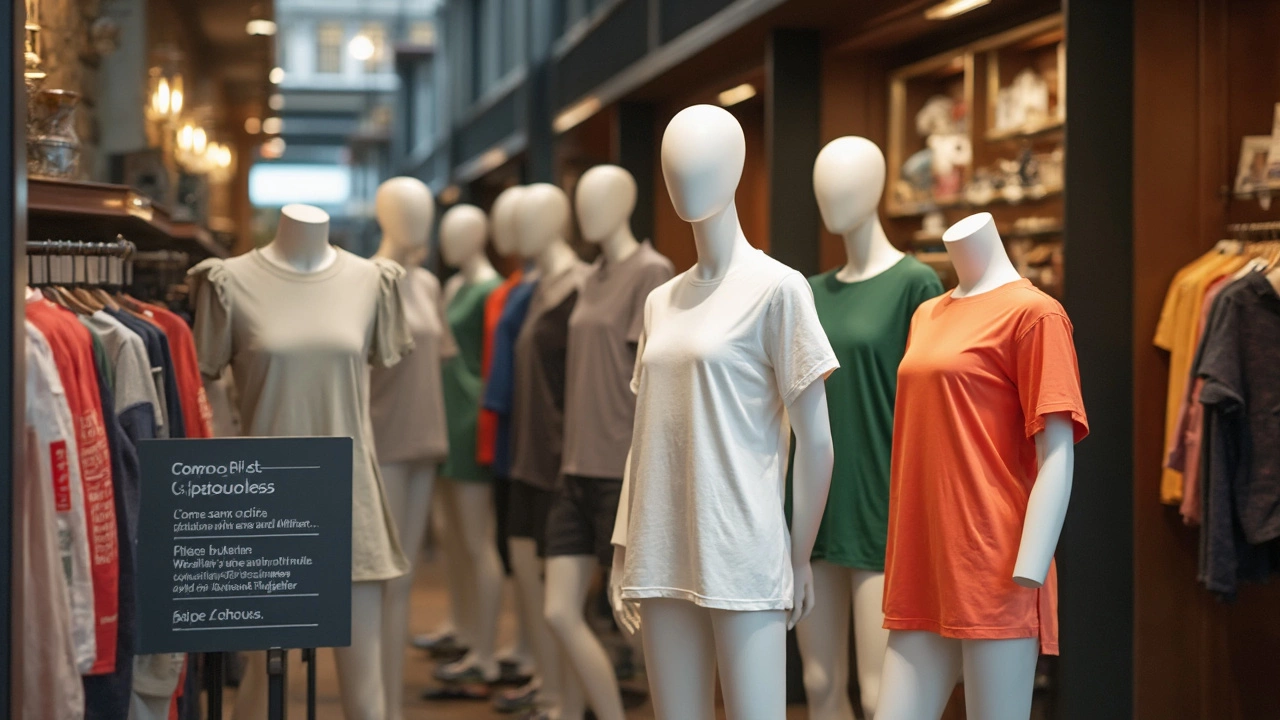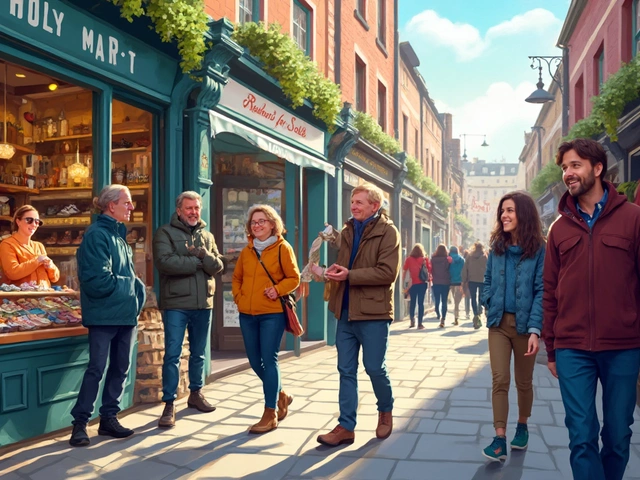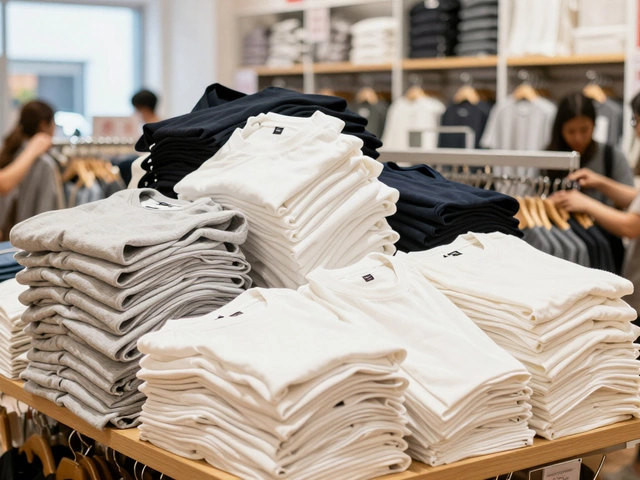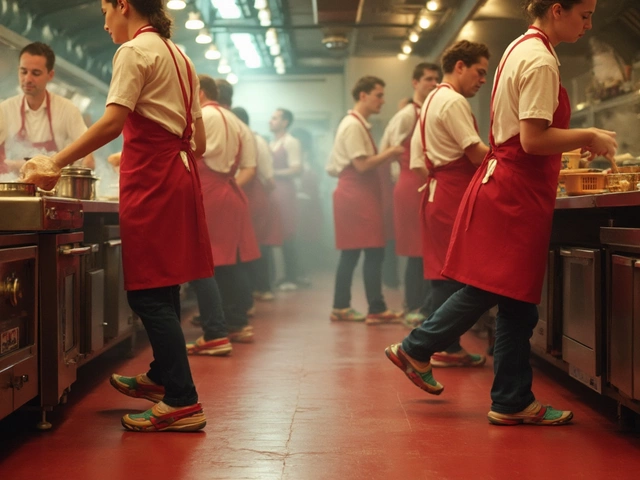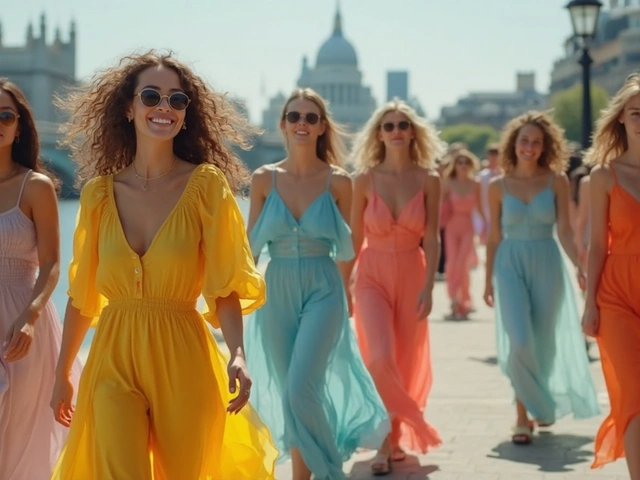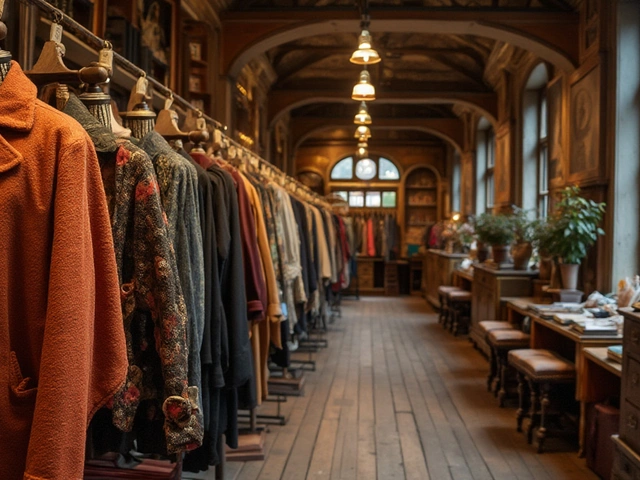Ever find yourself staring at a wall of t-shirts, wondering which color might be the next big hit? You're not alone. It turns out, picking the right color isn't just about personal taste; there's actually some interesting science and trends behind it. Believe it or not, the colors flying off the shelves often have a lot to do with psychology and social buzz.
Neutrals like black, white, and gray are timeless winners because they're like that favorite pair of jeans—super versatile and easy to match. But don't count out those bold shades just yet. Bright colors tend to spike in popularity around certain seasons or events, and understanding this can actually give you a bit of an edge, whether you’re refreshing your wardrobe or stocking a retail store.
- The Science Behind T-Shirt Color Popularity
- Current Trends and Best-Sellers
- Seasonal Color Preferences
- Tips for Choosing the Right T-Shirt Colors
The Science Behind T-Shirt Color Popularity
So, what's the deal with certain t-shirt colors always being in demand? It’s all about psychology and perception. Color can seriously affect mood and behavior, and retailers know this. Neutral t-shirt colors like black and white often reign supreme thanks to their versatility—they fit any occasion and never go out of style.
But here’s where it gets interesting: colors like red or blue can evoke certain feelings—red is often linked with excitement and energy, while blue brings calm and trust. It’s no wonder brands carefully select their best-selling t-shirts based on these insights.
Let’s not forget the role of cultural trends and seasonal shifts, which can make certain shades more appealing. Bright colors shine in the summer months when everyone’s feeling festive, but in fall, earthy tones like greens and browns step into the spotlight.
Researchers have also found that consumers react differently to color based on things like age and gender. For instance, younger shoppers are often drawn to vibrant, flashy hues, while more mature buyers prefer classic shades.
| Color | Emotion/Association |
|---|---|
| Black | Classic, Sophisticated |
| White | Clean, Pure |
| Red | Bold, Energetic |
| Blue | Trustworthy, Calm |
The good news is, understanding this can be a game-changer. Whether you’re picking out clothes for yourself or a store, knowing a bit about how colors work their magic can help you make smarter choices. So, next time you're faced with that colorful display, remember there's more to it than meets the eye!
Current Trends and Best-Sellers
So, what's hot right now in the world of t-shirt colors? While the basic neutrals—the blacks, whites, and grays—still reign supreme due to their versatility, the fashion scene is buzzing with new excitement over bolder choices. Bright and vibrant hues are making a strong comeback, especially among younger generations who aren't shy about standing out. Think eye-popping reds, electric blues, and the ever-popular tie-dye patterns.
What’s driving these trends? A lot of it comes from the fashion runways and celebrity influencers who love to sport these daring shades. When your favorite star rocks a neon green tee on social media, it’s no surprise sales for that color spike dramatically.
Another key factor is the shift towards sustainable and earthy tones. More clothing brands are focusing on environmental impact, leading some cool color trends featuring earthy hues like deep greens and subtle browns that align with the eco-friendly movement.
To give you a snapshot of what people are actually buying, check out this quick breakdown of best-sellers from a recent survey:
| Color | % of Total Sales |
|---|---|
| Black | 35% |
| White | 25% |
| Gray | 15% |
| Red | 10% |
| Blue | 10% |
| Other Bright Colors | 5% |
So, if you're looking to stock up your closet or your shop, keeping an eye on these current trends is key. Whether you choose the tried-and-true neutrals or jump on the bright bandwagon, understanding what's in vogue can help guide your choices in making solid picks, both fashionably and commercially.

Seasonal Color Preferences
When it comes to t-shirt colors, the seasons play a huge role in deciding what people are likely to buy. Colors that pop like bright blues and fiery reds are often in demand during spring and summer. These colors reflect the vibrant energy of sunny days and outdoor activities.
Come fall, you'll notice a shift as earth tones like browns, deep greens, and maroons take the spotlight. These fashion tips are linked to the natural changes around us. As trees shed their leaves and the atmosphere becomes cozier, people naturally lean toward colors that mimic this warm coziness.
In winter, darker shades such as navy, charcoal, and even classic black dominate. These colors are not only practical for the season but also contrast well with the lighter, sometimes snowy landscape. It’s like everyone’s way of wrapping themselves in a cocoon of warmth.
If you're keen on riding the seasonal wave, keep an eye on upcoming trends. Designers and retailers often introduce new hues each season, and being ahead of this curve can help you make smart purchasing or stocking decisions.
For those keeping an eye on clothing trends, it can also be fun to know that certain events or themes, like holidays and special events, can temporarily boost the demand for specific colors. Think red and green during Christmas, or pastels around Easter.
Tips for Choosing the Right T-Shirt Colors
Picking the perfect t-shirt color can seem like a guessing game, but it doesn't have to be. Whether you're adding to your closet or curating options for a store, knowing how to choose colors that are appealing and trendy can make a big difference. Here's how you can nail it.
1. Consider the Purpose: Are you going for something casual or formal? Black and white t-shirts are like your trusty sidekicks—they fit almost any occasion. For a pop of personality, try seasonal colors. Spring and summer love bright hues like coral and turquoise, while fall and winter lean towards deep reds and earthy tones.
2. Know Your Audience: If you're in the retail biz, understanding your target market's preferences is crucial. Younger crowds might dig bold, eye-catching colors, while more mature customers might prefer classic neutrals.
3. Keep up with Trends: These days, staying trendy might mean scrolling through Insta or Tiktok. Influencers often set the pace for what's hot in fashion. If you spot a color that's all over your feed, it might be a good time to stock up on those shades.
4. Understand the Psychology: Colors evoke emotions and reactions. Blue, for instance, is calming and trustworthy, making it perfect for workwear. Meanwhile, red is all about energy and passion, ideal for nights out or special events.
5. Don't Forget the Best Sellers: Never underestimate the power of data. Look at what sells well. Oftentimes, best-selling t-shirts feature colors that people feel good wearing every day. You might even consider having a balance between timeless colors like black and white and trendy shades to cover all your bases.
6. Quality and Fabric Matter: Sometimes a color looks fab in cotton but might not pop in polyester. Experiment with how a color shows up on different fabrics to ensure you're offering the best version of your selections.
Here's a quick breakdown of how some popular colors stack up in terms of sales and mood impact:
| Color | Popularity Rank | Associated Mood |
|---|---|---|
| Black | 1 | Timeless, versatile |
| White | 2 | Clean, simple |
| Red | 3 | Bold, energetic |
| Blue | 4 | Calm, trustworthy |
With these tips in your back pocket, you're all set to choose clothing trends that not only look good but feel great. Happy t-shirt hunting!
